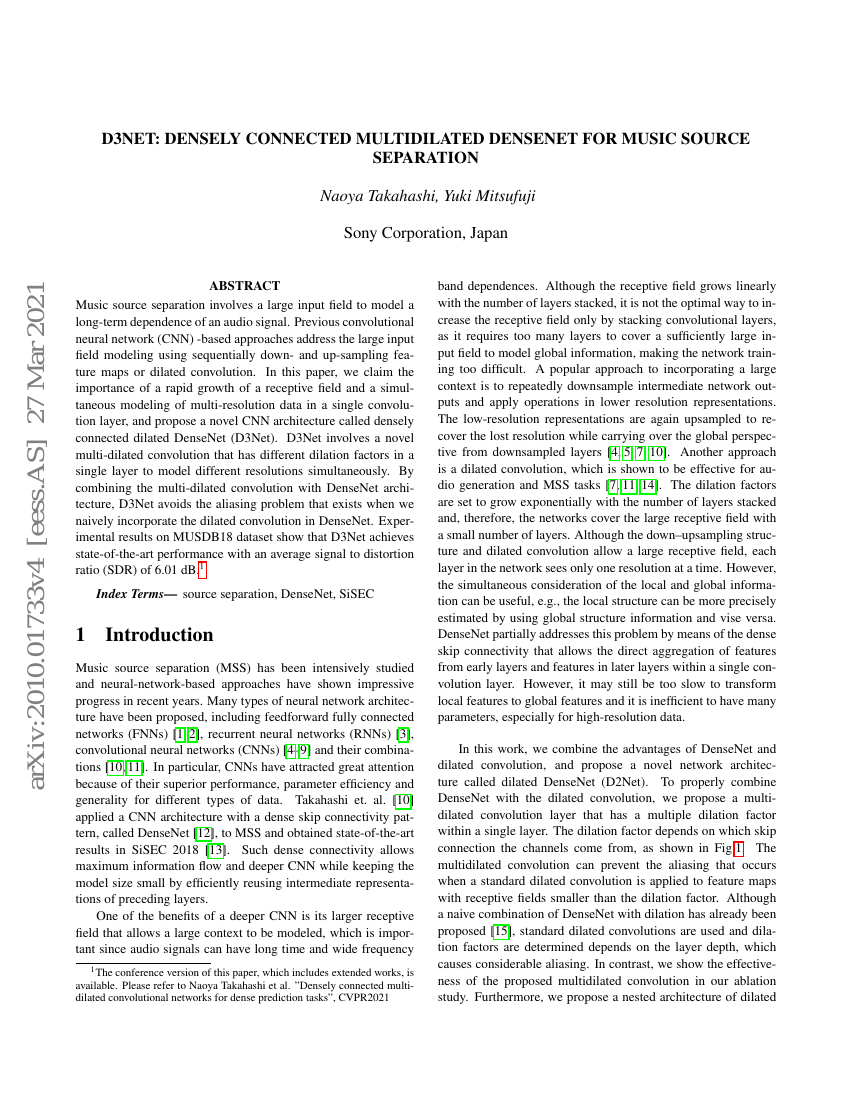Command Palette
Search for a command to run...
D3Net: Densely connected multidilated DenseNet for music source separation
Naoya Takahashi Yuki Mitsufuji

Abstract
Music source separation involves a large input field to model a long-term dependence of an audio signal. Previous convolutional neural network (CNN)-based approaches address the large input field modeling using sequentially down- and up-sampling feature maps or dilated convolution. In this paper, we claim the importance of a rapid growth of a receptive field and a simultaneous modeling of multi-resolution data in a single convolution layer, and propose a novel CNN architecture called densely connected dilated DenseNet (D3Net). D3Net involves a novel multi-dilated convolution that has different dilation factors in a single layer to model different resolutions simultaneously. By combining the multi-dilated convolution with DenseNet architecture, D3Net avoids the aliasing problem that exists when we naively incorporate the dilated convolution in DenseNet. Experimental results on MUSDB18 dataset show that D3Net achieves state-of-the-art performance with an average signal to distortion ratio (SDR) of 6.01 dB.
Code Repositories
Benchmarks
| Benchmark | Methodology | Metrics |
|---|---|---|
| music-source-separation-on-musdb18 | D3Net | SDR (avg): 6.68 SDR (bass): 6.20 SDR (drums): 7.36 SDR (other): 5.37 SDR (vocals): 7.80 |
| music-source-separation-on-musdb18 | D3Net | SDR (avg): 6.01 SDR (bass): 5.25 SDR (drums): 7.01 SDR (other): 4.53 SDR (vocals): 7.24 |
Build AI with AI
From idea to launch — accelerate your AI development with free AI co-coding, out-of-the-box environment and best price of GPUs.